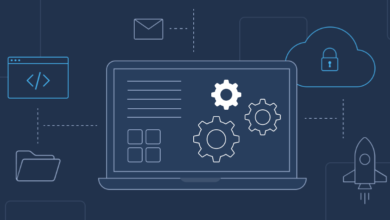Tips for Getting the Most Out of Your NEMT Software Investment

Non-Emergency Medical Transportation (NEMT) software plays a vital role in streamlining operations, enhancing customer experience, and ensuring regulatory compliance. To maximize the return on investment (ROI) from your NEMT software, it’s essential to optimize its usage and continuously improve its performance. This blog post provides practical tips to help you get the most out of your NEMT software investment.
Selecting the Right NEMT Software
- Evaluating essential features: When choosing NEMT software, carefully assess its features to ensure it meets your business needs, such as trip scheduling, dispatching, billing, and reporting capabilities.
- Assessing integration capabilities: Make sure the software integrates seamlessly with your existing systems and processes to avoid disruptions and inefficiencies.
- Considering scalability and futureproofing: Select a solution that can grow with your business and adapt to changing industry requirements.
Implementing the Software Effectively
- Ensuring proper installation and setup: Work closely with the software vendor to ensure a smooth installation and setup process, minimizing potential issues and downtime.
- Integrating with existing systems and processes: Integrate the software with your current systems to streamline workflows and improve overall efficiency.
- Allocating resources for maintenance and updates: Set aside resources to maintain the software and apply updates, ensuring optimal performance and security.
Employee Training and Support
- Investing in comprehensive training programs: Provide your team with thorough training on the software to maximize its potential and increase productivity.
- Providing ongoing support and resources: Offer continuous support and resources to help your employees stay informed and address any issues that may arise.
- Encouraging employees to explore and utilize software features: Motivate your team to explore the software’s features and use them to their full potential, improving overall efficiency and effectiveness.
Regularly Reviewing and Optimizing Software Usage
- Analyzing usage data and trends: Regularly review software usage data to identify trends and areas for improvement.
- Identifying areas for improvement: Use the insights gained from usage data to make adjustments and optimize software performance.
- Implementing changes and adjustments: Make necessary changes and adjustments to your software usage based on your analysis, ensuring continuous improvement.
Leveraging Automation and Advanced Features
- Utilizing trip scheduling and dispatching tools: Take advantage of automated scheduling and dispatching features to improve efficiency and reduce manual intervention.
- Implementing automatic billing and reporting: Streamline billing and reporting processes by leveraging automation features, saving time and reducing errors.
- Harnessing the power of GPS tracking and navigation: Maximize the benefits of GPS tracking and navigation to enhance fleet management and ensure efficient routes.
Monitoring and Evaluating Software Performance
- Setting performance benchmarks and goals: Establish clear benchmarks and goals to measure the software’s performance and assess its impact on your business.
- Regularly reviewing software performance: Continuously monitor the software’s performance to ensure it meets your benchmarks and goals.
- Communicating with the software vendor for improvements and feature requests: Maintain an open line of communication with the vendor to request improvements or new features that can further enhance the software’s value.
Staying Up to Date with Industry Trends and Advancements
- Participating in industry events and webinars: Attend relevant events and webinars to stay informed about industry trends and best practices.
- Subscribing to relevant newsletters and publications: Keep up with the latest news and developments in the NEMT industry by subscribing to relevant newsletters and publications.
- Engaging with other NEMT professionals and sharing experiences: Connect with peers in the industry to share experiences, challenges, and insights, fostering a culture of continuous learning and improvement.
Conclusion
Maximizing the value of your NEMT software investment involves a combination of selecting the right solution, implementing it effectively, providing comprehensive employee training and support, regularly reviewing and optimizing usage, leveraging automation and advanced features, and staying informed about industry trends and advancements. By following these tips and maintaining a commitment to continuous improvement, you can enhance efficiency, productivity, and overall success of your NEMT business.
Remember that each business is unique, and the key to unlocking the full potential of your NEMT software lies in understanding your specific needs and adapting the software to meet those needs. By proactively managing and maximizing your software investment, you’ll be well-positioned to thrive in the competitive and ever-changing landscape of the NEMT industry.




